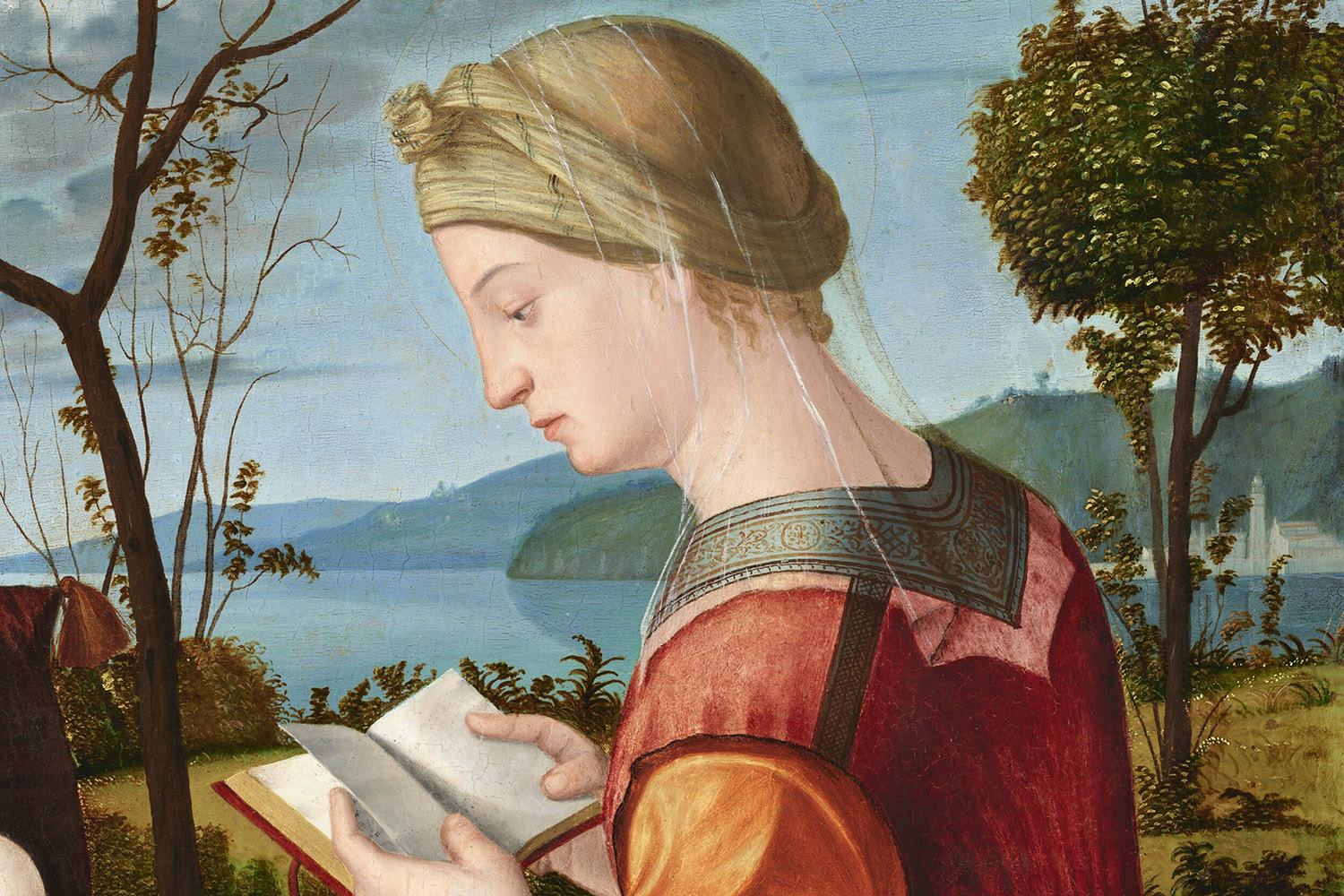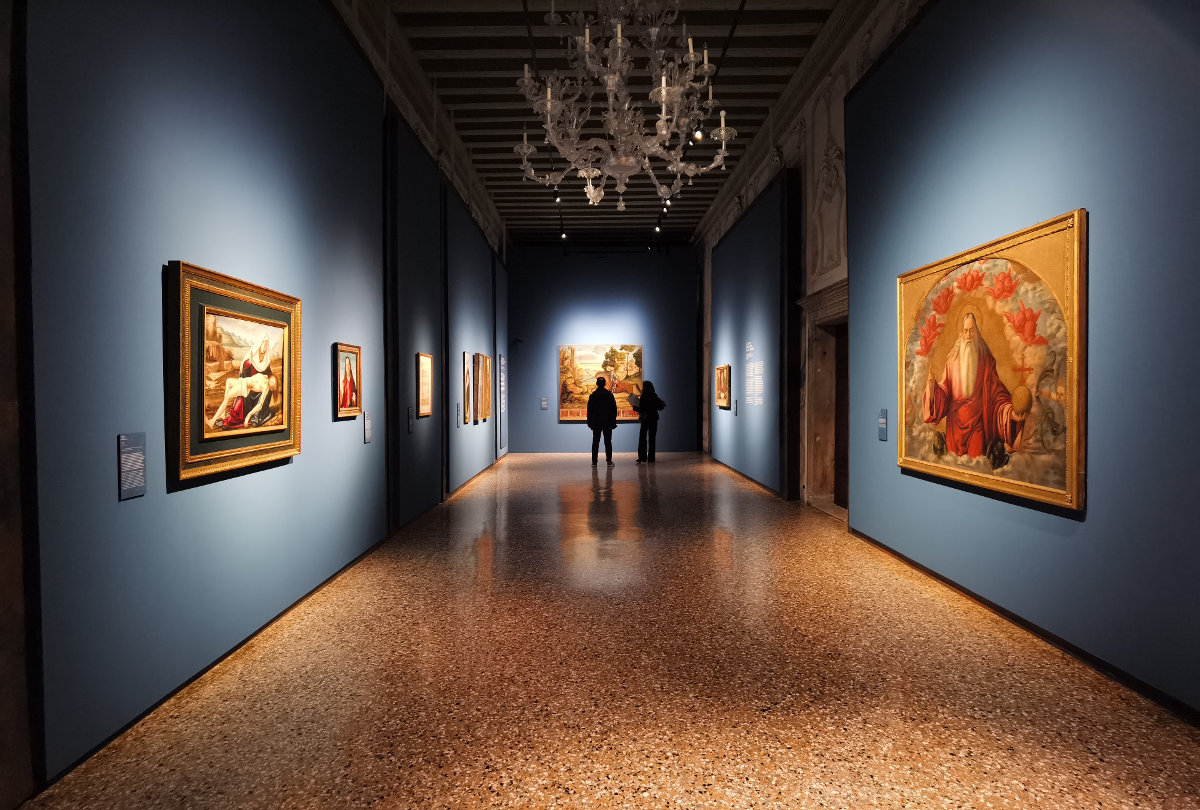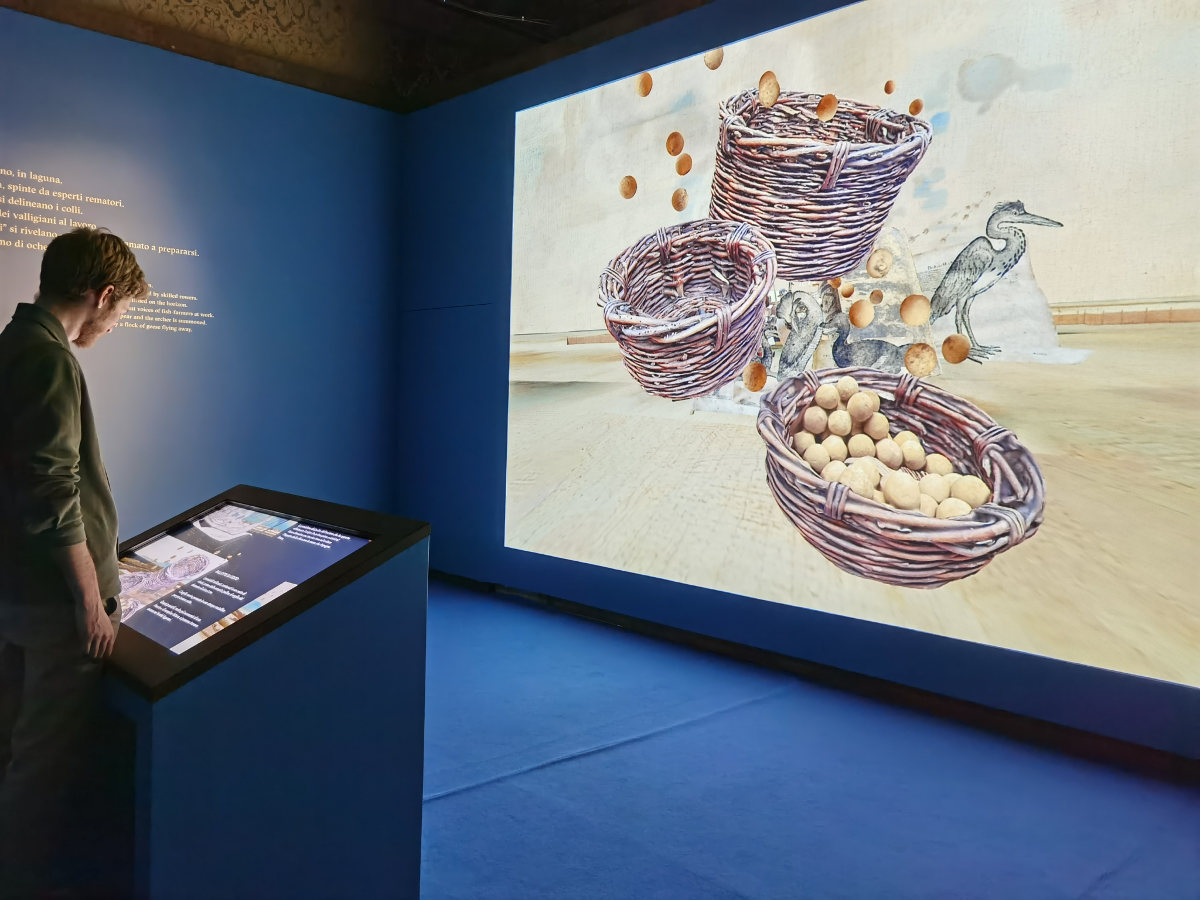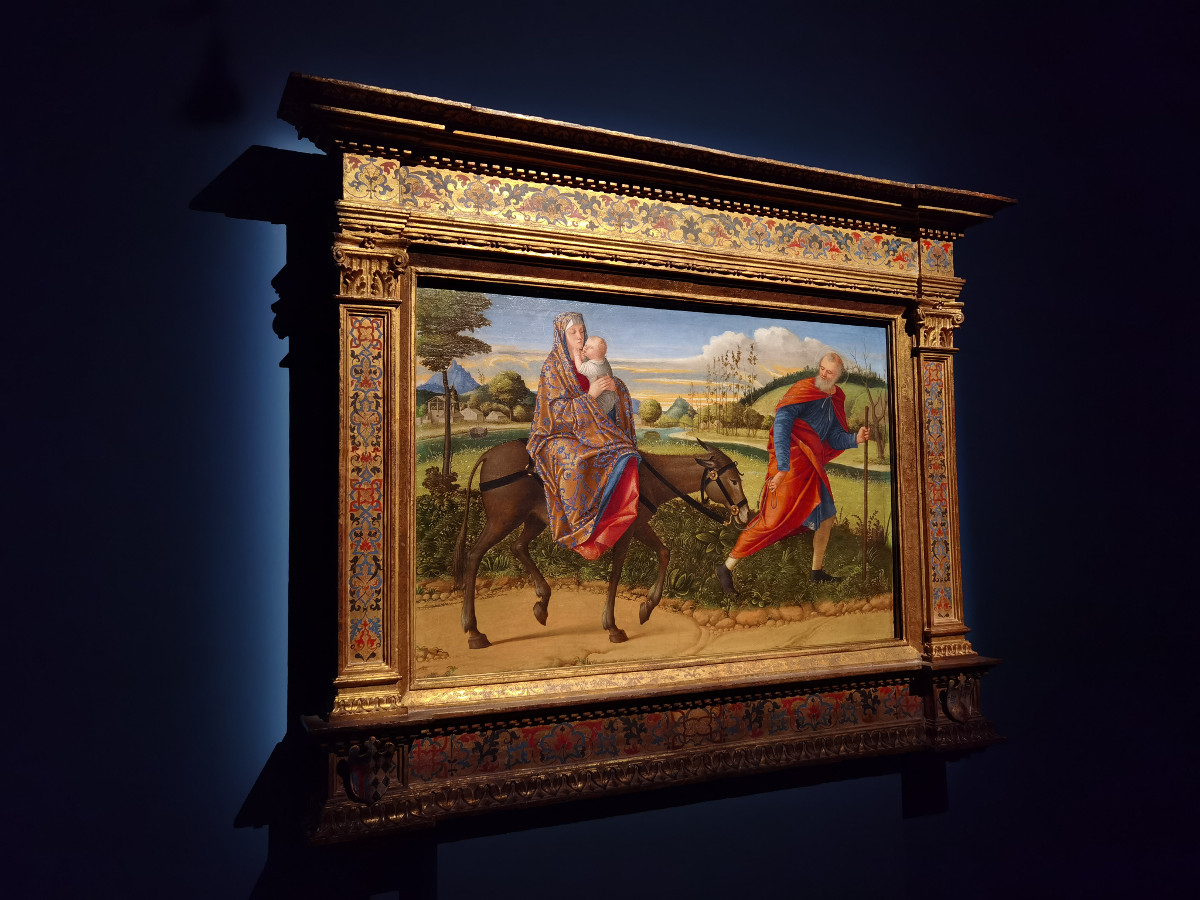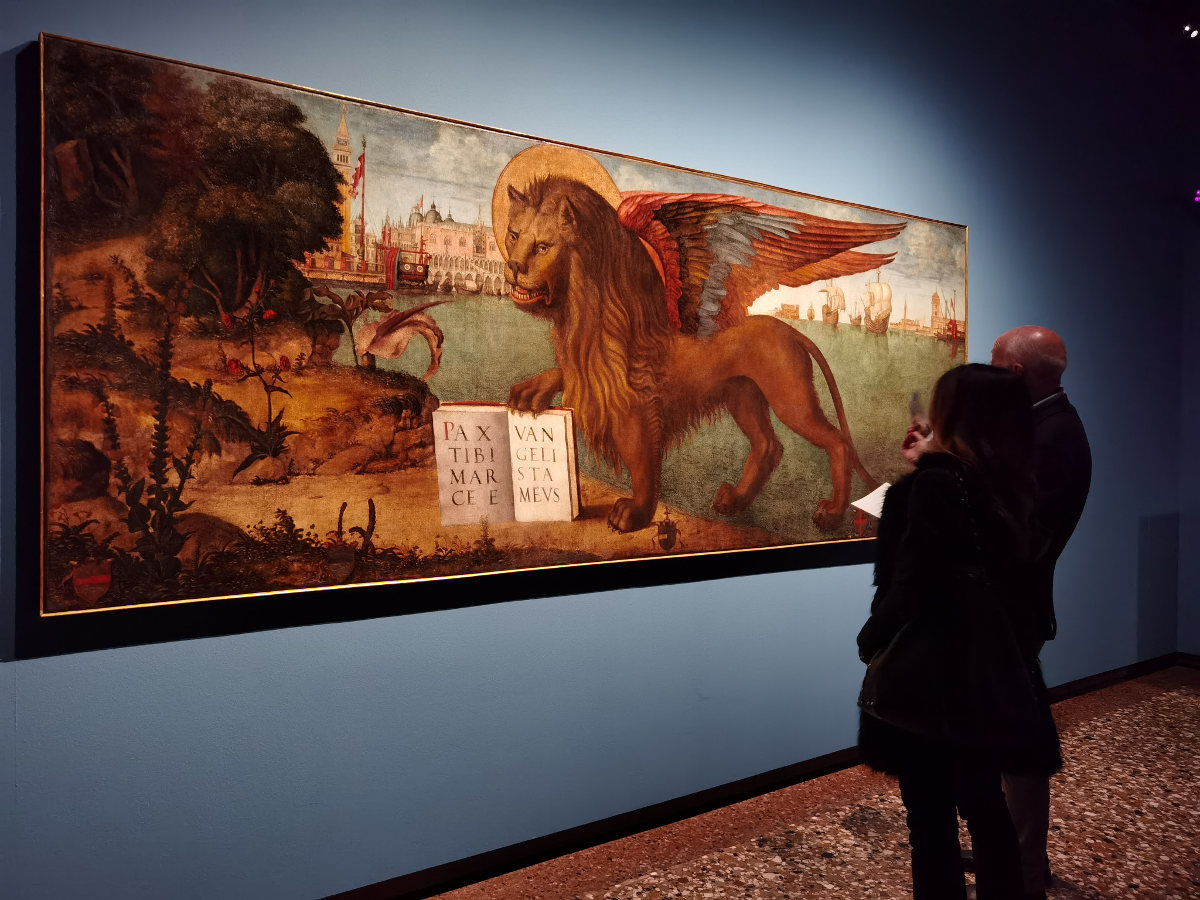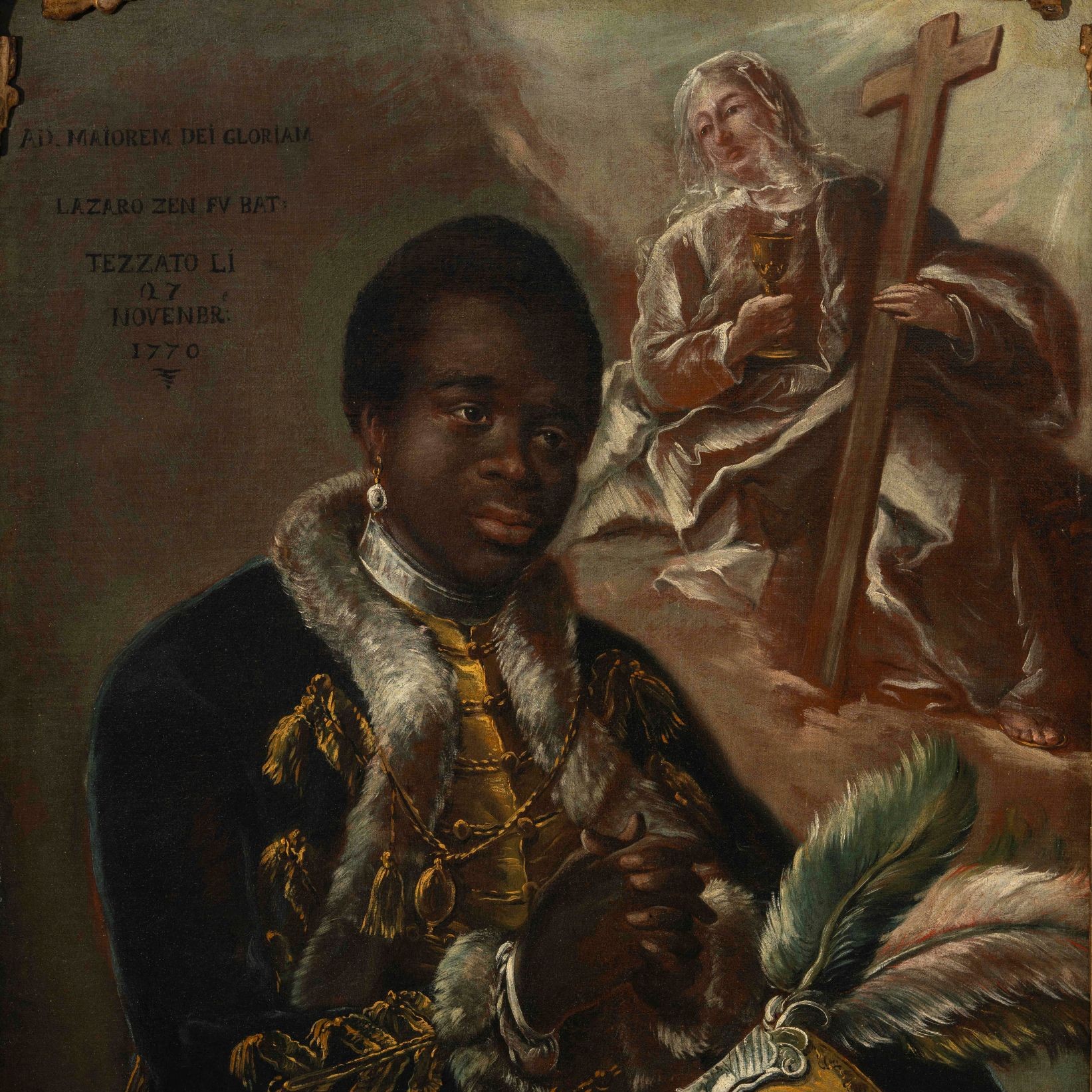For adults
Guided tours
1. Guided tour of the exhibition
On the occasion of the exhibition on Vittore Carpaccio at the Doge’s Palace, organised in collaboration with the National Gallery of Art in Washington, a guided tour documents the artistic evolution and skilful painting technique of one of the greatest protagonists of Venetian painting, enabling visitors to immerse themselves in the grandeur and splendour of Renaissance Venice at the dawn of its Golden Age. Approximately forty paintings and a nucleus of drawings by the artist are on display, who is renowned above all for the narrative cycles produced for Venetian confraternities, such as those of Sant’Orsola, now in the Gallerie dell’Accademia, or those for the Scuola di San Giorgio degli Schiavoni. The exhibition gives an account of his extraordinary imaginative, narrative and descriptive capacity and includes a once-in-a-lifetime opportunity: the possibility of admiring two masterpieces that are exceptionally reunited here. These are the Fishing and fowling on the lagoon from the J. Paul Getty Museum in Los Angeles and the Two Venetian ladies from the Museo Correr and they were originally a single work, painted as a panel for a door. The exhibition also presents other works that have returned to the city where they were made for the first time in centuries.
Duration: 1h 30min
Languages: Italian, English, French
2. Guided tour museum (Doge’s Palace) + exhibition
This tour complements the visit to the Doge’s Palace with a focus on the Vittore Carpaccio. Paintings and Drawings exhibition in the Doge’s Apartments. The tour carries visitors into the pulsating ‘heart’ of the history and political life of the Serenissima, discovering the settings, architecture and symbols that recur in many of the paintings by the Venetian artist, who, for the Doge’s Palace, created a narrative cycle in 1507 that was later destroyed by a fire that affected parts of the palace in 1577.
Reduced admission thanks to the special 2 euro fee for the exhibition ticket reserved for those who purchase the museum ticket.
Duration: 2h 30min
Languages: Italian, English, French
For families
Guided tours
Carpaccio the ‘storyteller’
An entertaining and interactive visit to the exhibition dedicated to Vittore Carpaccio at the Doge’s Palace, giving an account of the artistic production of the artist who, thanks to the particular narrative style of his painting, was particularly well-adapted to depicting ‘stories’ with episodes dotted with fantastic elements, but also with details of everyday life. Carpaccio was indeed a true ‘storyteller’. The tour is accompanied by an activity book that offers games, clues to follow up, stories and insights, to provide insights into the artist’s work and his time.
For families with children aged 10 to 14
Duration: 1h 30min
Languages: Italian, English
For schools
SCHOOLS AT THE MUSEUM
Vittore Carpaccio. Paintings and drawings
Guided tours of the exhibition
1. The exhibition
On the occasion of the exhibition on Vittore Carpaccio at the Doge’s Palace, organised in collaboration with the National Gallery of Art in Washington, a guided tour aimed at secondary schools documents the artistic evolution and skilful painting technique of one of the greatest protagonists of Venetian painting, enabling visitors to immerse themselves in the grandeur and splendour of Renaissance Venice at the dawn of its Golden Age. Approximately forty paintings and a nucleus of drawings by the artist are on display, who is renowned above all for the narrative cycles produced for Venetian confraternities, such as those of Sant’Orsola, now in the Gallerie dell’Accademia, or those for the Scuola di San Giorgio degli Schiavoni. The exhibition gives an account of his extraordinary imaginative, narrative and descriptive capacity and includes a once-in-a-lifetime opportunity: the possibility of admiring two masterpieces that are exceptionally reunited here. These are the Fishing and fowling on the lagoon from the J. Paul Getty Museum in Los Angeles and the Two Venetian ladies from the Museo Correr and they were originally a single work, painted as a panel for a door. The exhibition also presents other works that have returned to the city where they were made for the first time in centuries.
Target: secondary schools, universities
Duration: 2h
Languages: Italian, English, French
2. Carpaccio the ‘storyteller’
Guided tour of the exhibition
Carpaccio, a Venetian artist who lived at the turn of the fifteenth and sixteenth centuries, is renowned above all as a great painter of ‘stories’, so much so that he could be defined as a true ‘storyteller’. The major exhibition at the Doge’s Palace, organised in collaboration with the National Gallery of Art in Washington, is dedicated to the artist, and illustrates his extraordinary imaginative, narrative and descriptive skills. Through the paintings and drawings on display, this guided tour aimed at schools intends to focus on some important aspects of his art with which portray the unforgettable image of a Venice at the height of its Renaissance splendour: packed with figures, cities, animals, plants, clothes, objects, as well as symbolic and fantastic elements. The activity is accompanied by an activity book with games, clues to resolve, stories, insights and hints for a full understanding of the artist’s work and his time.
Target: Class V of primary schools and first-grade secondary schools
Duration: 2h
Languages: Italian, English
3. Guided tour of the museum (Doge’s Palace) + exhibition
This tour complements the visit to the Doge’s Palace with a focus on the ‘Vittore Carpaccio. Paintings and Drawings’ exhibition in the Doge’s Apartments. The tour carries visitors into the pulsating ‘heart’ of the history and political life of the Serenissima, discovering the settings, architecture and symbols that recur in many of the paintings by the Venetian artist, who, for the Doge’s Palace, created a narrative cycle in 1507 that was later destroyed by a fire that affected parts of the palace in 1577.
Reduced admission thanks to the special 2 euro fee for the exhibition ticket reserved for those who purchase the museum ticket.
Target: Class V of primary schools and first and second-grade secondary schools, universities
Duration: 2h 30min
Languages: Italian, English, French
Other activities to learn more
In the last room of the exhibition (room 12), a multimedia station offers all visitors to the show an extraordinary, totally immersive 3D experience of the painting Fishing and fowling on the lagoon, the true ‘icon’ of the event. The masterpiece, on loan from the J. Paul Getty Museum in Los Angeles, has been exceptionally reunited for the occasion with the Two Venetian ladies of the Museo Correr (the works were originally conceived as a single work, one of two panels for a door), also present in the exhibition. The interactive tour leads to the discovery of a work that, perhaps for the first time, depicts an old lagoon setting as it was at the end of the fifteenth century, and a traditional hunting activity, carried out with a bow and ball-tipped arrows. The activity will enable us to consider some aspects of the work that are as yet unpublished or little known, ranging from the purely artistic to the naturalistic and ethnographic: what birds are shown? How did one go about hunting with a bow and which species were targeted? What boats were used?
These and other questions will be explored with the help of a modern and spectacular digital tool.
Target: adults, schools of all levels, families
